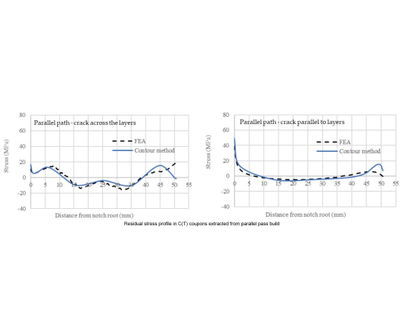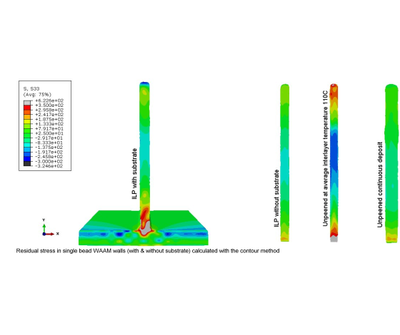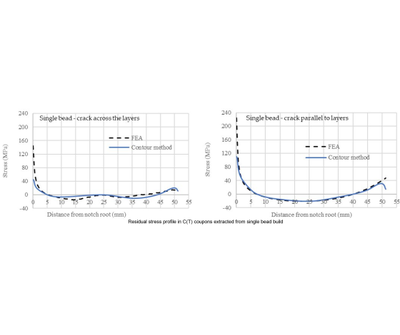


Residual Stresses in WAAM Titanium
Wire + arc additive manufacturing (WAAM) is a modern manufacturing process that hasopened new possibilities for rapid builds and reductions in material wastage. This paper exploresresidual stress in WAAM Ti-6Al-4V walls built using three different deposition strategies: singlebead, parallel path, and oscillation path. The effect of interlayer hammer peening and interlayertemperature was investigated for the single bead walls. We also examined the residual stress incompact-tension (C(T)) coupons extracted from large builds (walls) with crack orientation eitherparallel with or perpendicular to the build direction. This type of sample is often used for themeasurement of the fatigue crack growth rate. The contour method was used for experimentaldeterminations of residual stress. In addtion, residual stress in the C(T) coupons was estimatedby finite element (FE) analysis. A good agreement was achieved between the contour method andFE analysis. The oscillation-path wall had the lowest residual stress values. For the single beadwalls built with various process conditions, residual stress was significantly reduced after removingthe substrate. A interlayer temperature of 110◦C resulted in much higher residual stress valuesin the wall (both tensile and compressive) compared to the continuous build, with much higherinterlayer temperature.
Ahmad, X. Zhang, H. Guo, M. E. Fitzpatrick, L. M. S. C. Neto, and S. Williams, “Influence of Deposition Strategies on Residual Stress in Wire + Arc Additive Manufactured Titanium Ti-6Al-4V,” Metals (Basel), vol. 12, no. 2, p. 253, Jan. 2022, doi: 10.3390/met12020253.
Information
- Research Area:Material Performance
-
Investigators:
Bilal Ahmad
, Michael Fitzpatrick, Xiang Zhang, Stewart Williams - Publications:https://doi.org/10.3390/met12020253
